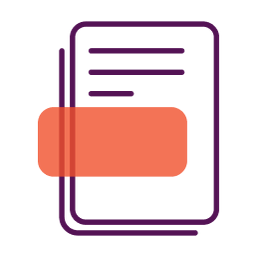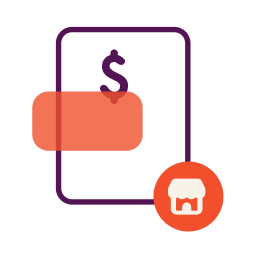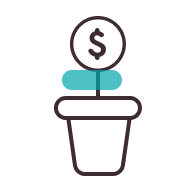When you’re running a business, finding customers is the goal. But repeat customers can be even better for your bottom line. And while a great product can drive repeat business, often you need even more than that.
That’s where customer loyalty programs come in. They can offer perks that get your customers back in your store (or back on your website), incentives to talk about your business on social media, or rewards for referring other customers.
Here’s expert advice for making a customer loyalty rewards program part of your marketing strategy for your small business.
What is a Customer Loyalty Program?
A customer loyalty program rewards your customers and encourages them to come back and buy from your business again. It can also incentivize them to recommend your business to others.
“There is a steakhouse I go to each year on my birthday because they have such a generous birthday offer,” says Scott Lieberman, founder of TouchdownMoney.com. “I fly a certain airline when the price is similar because I’m collecting their loyalty miles for a future free flight. I pick a particular hotel chain over others because their loyalty program rewards me with upgraded rooms.”
Lieberman is the type of customer loyalty programs are designed to attract. He makes purchasing decisions based at least in part on the loyalty program rewards he will earn.
Why Do Small Businesses Need a Loyalty Program?
As CEO of Greenpal, a network that connects lawn care professionals to clients, Bryan Clayton has spent several years deep in the weeds designing, implementing and running loyalty programs for the company. He points to several benefits of loyalty programs:
“Increase customer retention and brand loyalty. Customers who are rewarded for their loyalty are more likely to stay with the brand, buy more often, and spend more.
“Generate word-of-mouth and referrals. Customers who are satisfied and delighted by the rewards are more likely to recommend the brand to their friends, family, and social networks.
“Enhance customer feedback and engagement. Customers who are incentivized to leave reviews, ratings, and testimonials are more likely to provide valuable feedback and insights. They are also more likely to interact with the brand through various channels and platforms.
“Reduce customer acquisition costs and increase profitability. Customer loyalty programs help to retain existing customers and attract new ones, which lowers the cost of acquiring new customers. They also increase the lifetime value and profitability of loyal customers.”
For online tactical gear store FS9 Tactical, an increase in user generated content was a bonus benefit of implementing its reward program. The ecommerce retailer implemented a tool that allows customers to earn points for activities like purchases, social sharing, birthdays, following social channels, providing user generated content, etc.
The program offers “a great way to get many of our customers to assist and help with marketing efforts and engage with us on a higher level than just clicking the buy button.” says Craig Sawyer, logistics and customer service manager, FS9 Tactical. “It’s actually quite hard to get customers to provide user generated content so this was a big help!”
Ultimately the goal of a customer loyalty program is to increase income. Business revenues contribute to profitability and can also help a business qualify for small business loans.
Types of Customer Loyalty Programs
There are numerous types of customer loyalty programs, each with its own pros and cons.
Points Programs
Here, customers earn rewards points for purchases. Common with credit card reward programs, points-based programs may allow customers to earn a point or two for each dollar they spend, or they may earn a specific number of points per purchase. Loyalty points may be redeemed for merchandise the retailer offers, or in the case of credit card rewards, travel or merchandise.
Tiered Programs
As customers spend more money, they move up in reward tiers. Higher tiers unlock more benefits. Hotel and airline loyalty programs often incorporate this type of reward structure. A Hilton Honors Diamond member earns the highest level of rewards in the Hilton’s Honors loyalty program, for example.
Cashback Programs
Here customers earn cash back when they spend with the company. The more you spend, the more cash you earn. With some programs the cash earned may be spent at the specific retailer offering the program, or in the case of a consumer or business credit card, cash earned can be used in myriad ways including a statement credit.
Subscriptions and Paid Programs
Here customers pay a fee to unlock certain benefits. It could be a monthly subscription that bundles benefits, or an annual fee. Amazon Prime is an example of a paid loyalty program.
Punch Card Programs
Common with smaller retailers, this program offers a loyalty card that is punched each time customers make a purchase, or for every amount spent over a threshold (say $5 or $10). A loyalty program example here is coffee shops or smoothie restaurants that offer a free beverage after a certain number of punches.
Partner Programs
Here retailers partner together to offer rewards. A grocery store that offers a discount on fuel purchases at certain gas stations is an example of a partnership program.
Gamified Programs
With this type of program, you can earn rewards for various types of activities (referrals, purchases, etc). Rewards are gamified so you may earn badges or compete against other customers.
Key Elements of a Successful Loyalty Program
You may have to experiment to find the right program for your audience, but here are some elements that successful loyalty programs often have in common.
Clear Value Proposition
“Reward early and often,” says Barbara Casey, CEO of Mobile High 5, a full service mobile marketing agency for small business owners. She generally recommends designing your program so customers can achieve a reward after 5—6 visits. “You want rewards attainable,” she advises. “Better to give a smaller reward for a lesser number of purchases than to make it too high a hurdle to get to a bigger reward.”
Easy Enrollment
Clayton encourages her clients to integrate the program into the POS system whenever possible. This allows staff to enroll them automatically when they make their first purchase. Ecommerce stores should make it easy for customers to sign up.
User-Friendly Platform
“The loyalty program should be easy to understand, join, and use,” says Clayton. “The rules, terms, and conditions should be clear and transparent. The rewards and redemption process should be hassle-free and convenient.”
Ongoing Communication
“Keep customers interested and involved with the brand through various touchpoints and channels,” advises Clayton. “The loyalty program should also use effective messaging and storytelling to convey the value and benefits of the program.”
Staff Support
Staff support will be key to a successful program, Casey insists. “You can have a great loyalty program but if no one ever mentions it to customers it becomes invisible.”
Sawyer recommends testing a program out with staff first to see how it works. “If they think it’s too hard to use or not fun, it might be better to keep trying other programs,” he suggests.
Gamification
Making its referral program fun and including social proof worked for GreenPal. It offered a $10 credit to both the referrer and the referee for every successful referral. A leaderboard featured top referrers and their rewards.
Clayton said the leaderboard feature “increased the motivation and competition among our customers to refer more people. We also saw that showcasing the success stories and testimonials of our referrers increased the trust and credibility of our brand.”
Best Practices for Implementing a Loyalty Program
“If I could summarize it in one mantra: ‘Test and then invest,” says Clayton.
Set Attainable Goals
“Define your goals and metrics,” suggests Clayton. “You should have a clear idea of what you want to achieve with your loyalty program and how you will measure your success. You should also set realistic and achievable targets and benchmarks.”
Know Your Customers
You’ll need to really get to know your customer base, and what they value. “You should conduct market research and customer analysis to understand your customers’ needs, preferences, expectations, and motivations. You should also study your competitors’ loyalty programs and identify their strengths and weaknesses,” Clayton advises.
Offer Relevant Rewards
You’ll need to listen to your customers to find out what really matters to them. Free products, early access to new products, upgrades, or even exclusive events are just some of the rewards that can help you build customer loyalty.
“Choose the right type and level of rewards,” says Clayton. “You should select the type of rewards that best suit your business model, value proposition, and customer segments. You should also balance the frequency and value of rewards to ensure profitability and customer satisfaction.”
Promote Your Program
You’ll need to get the word out to customers, whether that’s through in-store signage, email or, as Casey recommends, by getting your team to promote it. Once you start getting sign ups, consider incorporating options that allow loyalty members to refer customers.
“Test and optimize your loyalty program,” says Clayton. “You should launch your loyalty program as a minimum viable product (MVP) and collect feedback and data from your customers. You should also use A/B testing and experimentation to improve and refine your loyalty program based on the results.”
Measuring the Success of Your Loyalty Program
Without tracking, you won’t know if your program is successful. When you are setting up your program make sure you identify the metrics you want to follow and build that tracking into your system.
Tracking Key Metrics
There are several different ways to measure the success of your loyalty program: repeat purchases, an increase in the average amount spent by customers in the loyalty program versus those who do not participate, the number of customer referrals, and more.
Net promoter score is another metric Clayton suggests marketers consider. “This is the percentage of customers who are willing to recommend the brand to others minus the percentage of customers who are not. It indicates how well the loyalty program creates customer satisfaction and advocacy.”
An online business can measure success in part through website traffic. You can track specific traffic to your customer loyalty page on your website through tools like Google Analytics or Ahrefs, suggests Ryan David, lead investor of We Buy Houses in Pennsylvania. While traffic alone doesn’t mean success, it can help you monitor interest in the program.
“ROI can be calculated by adding up the number of purchases someone made to earn that reward x average spend – cost of the program,” says Casey. “If (results) are net positive, good for you! We see redemptions of our rewards in the 50-75% range. Birthday offers can be as high as 80-90%! And no one dines alone, so even though a restaurant is giving out a free meal, others the birthday person brought in are paying full price.”
Analyzing Customer Data
By analyzing customer data, Sawyer found referrals that hadn’t been accounted for. “We’ve seen more sales that we cannot directly track after implementing several loyalty programs and then we eventually realized when customers would comment ‘we heard about you from so and so’ or by looking at the promo code that the customers used,” he noted.
“Think of the LTV (lifetime value) of each customer,” suggests Lieberman. “Not just the one-time transaction.” The best customer loyalty programs increase customer lifetime value by encouraging repeat purchases.
Common Pitfalls to Avoid
Again, you may need to experiment to find the benefits that resonate best with your customers. Some common pitfalls you’ll want to avoid:
“Making the loyalty program too complex or confusing is a common mistake,” Clayton warns. “This can lead to frustration, confusion, and dissatisfaction among the customers. The loyalty program should be simple, clear, and transparent in terms of rules, terms, and conditions.”
Relying solely on email can be another common mistake, Casey points out. “When you send a reward out by email, more than 80% won’t even know they earned one,” she says. “Make sure your program is built with integrated mobile marketing.”
If you use a mobile app to deliver your program, be mindful about overwhelming members with too many notifications, which can quickly turn into a negative customer experience. “Texting too many offers” can also be a mistake, Casey observes.
Finally, Casey recommends small businesses work with an expert when possible. “It really requires specialized expertise and an understanding of the nuances and regulations of this channel,” she says.
Conclusion
Customer loyalty programs can be a great way to increase customer engagement, and encourage repeat business. If you want to grow your business, take the time to understand what will motivate your customers to come back and recommend your business, then create a reward program that shows you value their loyalty.
This article was originally written on July 18, 2023.




Have at it! We'd love to hear from you and encourage a lively discussion among our users. Please help us keep our site clean and protect yourself. Refrain from posting overtly promotional content, and avoid disclosing personal information such as bank account or phone numbers.
Reviews Disclosure: The responses below are not provided or commissioned by the credit card, financing and service companies that appear on this site. Responses have not been reviewed, approved or otherwise endorsed by the credit card, financing and service companies and it is not their responsibility to ensure all posts and/or questions are answered.